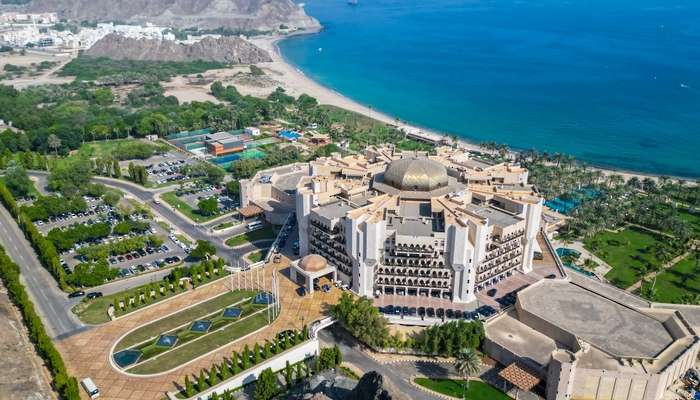
Muscat: The tourism sector in the Sultanate of Oman has seen an upswing in terms of financial revenues and visitor numbers, stimulating economic activities that support and intertwine with the sector, which is an effective economic pillar and a promising sector for economic diversification.
Data released by the National Centre for Statistics and Information (NCSI) showed that the tourism sector’s contribution to the national economy rose to OMR 2.12 billion by the end of 2024, compared to OMR 1.75 billion in 2018, representing a growth rate of 3.2 percent.
The tourism sector’s contribution to Oman’s GDP rose to OMR 2.7 billion in 2024, compared to OMR 2.3 billion in 2018, reflecting the growing of tourism on the national economy.
Salim Mohammed Al Mahrouqi, Minister of Heritage and Tourism, emphasised that the positive indicators achieved by the tourism sector in 2024, whether in terms of the number of visitors, the volume of spending, or the added value, represent the fruit of focused and ambitious efforts adopted by the Ministry to enhance the Sultanate of Oman’s position as a rich and diverse tourist destination.
He praised the efforts of the sector’s partners for their efforts to improve facilities and services, which contributed to achieving these qualitative indicators.
The Minister of Heritage and Tourism said that these indicators are the result of the government’s support for economic diversification policies and integration with various government agencies, which plays a pivotal role in creating an attractive environment for investment and accelerating the pace of tourism projects.
He pointed out that the ministry is keen to adopt innovative promotional policies, expand partnerships with the private sector, and develop tourism products and services to meet visitors’ aspirations and enhance the tourist experience.
He added that the Ministry is proceeding with plans to diversify tourism products and expand partnerships with local communities, enhancing the sector’s contribution to economic growth in the labour market, in line with existing trends to raise the level and numbers of national workers in this sector.
These efforts were reflected in other sector-related indicators. Total tourism consumption in the Sultanate of Oman rose to OMR 1.02 billion in 2024, compared to OMR 960 million in 2018.
Meanwhile, direct tourism added value grew by 5.3 percent to OMR 1.09 billion, compared to OMR 799.7 million in 2018. This demonstrates the strong interconnectedness between tourism and other economic sectors such as transportation, hospitality, retail, and culture.
In terms of tourism flow, the Sultanate of Oman received approximately 3.8 million visitors in 2024, of whom 68.2 percent were overnight visitors and 31.8 percent were same-day visitors. Total tourism spending by these visitors amounted to approximately OMR 989 million, with an average per capita expenditure of OMR 253.8.
The data indicated that more than 55 percent of incoming visitors were UAE residents, reflecting the strength of the Gulf market as a primary target market and underscoring the importance of enhancing land connectivity and facilitating travel between Gulf countries. European visitors accounted for 16 percent of the total, while visitors from Asian countries accounted for 13.2 percent, indicating the diversity of markets and the effectiveness of the promotional campaigns launched by the Ministry in cooperation with external offices.
Recreational tourism topped the list of reasons, accounting for 70.2 percent, followed by visiting relatives and friends at 17.9 percent, and shopping at 5 percent. The average length of stay ranged between 5 and 6 nights, with a total of 14.8 million tourist nights.
This confirms the ability of Omani destinations to attract visitors for longer periods, thanks to the diversity of tourism products, cultural experiences, natural sites, and historical and archaeological landmarks.
Regarding accommodation options, hotel establishments have witnessed a growth in demand, enhancing the feasibility of investing in tourism facilities, particularly in governorates with developing tourism infrastructure, such as Dhofar, Musandam, and Ad Dakhiliyah.
Projects underway and public-private partnerships are expected to contribute to expanding accommodation capacity and improving the quality of services.
On the other hand, the number of departing visitors reached 8.1 million, spending a total of OMR 1.8 billion, with an average per capita expenditure of OMR 218.5. This reflects the volume of domestic spending on outbound tourism and opens the door to developing initiatives to promote domestic tourism and direct purchasing power towards domestic destinations.
--